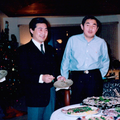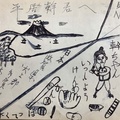The Dilemma for Incarcerated Nikkei Canadians: Dispersal to Eastern Canada or Deportation to Japan
As World War II neared its end, the Canadian government had to decide what to do next with the Nikkei Canadians it had forcibly uprooted from the British Columbia (BC) coast, dispossessed of their homes and property, and incarcerated mainly in ghost towns in the interior of the province. There was intense pressure to prevent them from moving back to the BC coast. Consequently, in contrast to their American counterparts who were allowed to return to their homes and property, the Nikkei Canadians were prohibited from doing so, and, in the form of a ‘loyalty test’, were given two very undesirable choices: disperse to eastern Canada or agree to be “repatriated” to Japan. Those agreeing to move to eastern Canada would be deemed ‘loyal’. Those who instead agreed to be sent to Japan would be deemed ‘disloyal’ and given free passage to Japan with 200 dollars for each adult and 50 dollars for each child. By August of 1945, a total of 10,347 Nikkei (about 40 percent of the Nikkei Canadian population) were on the list of those who had supposedly volunteered to be deported (Sunahara, Ann Gomer. The Politics of Racism: The Uprooting of Japanese Canadians During the Second World War. Toronto: James Lorimer & Company1981, 2000.p.109).
Reasons for Choosing Deportation
Although the government claimed their choice was voluntary, most felt they had no other realistic option. Due to the confiscation of their properties and the prohibition against their returning to the BC coast, they had almost nothing with which to restart their lives. Also, those who had spent their lives fishing or working in the forestry, mining or agriculture industries on the west coast doubted they could acquire new job skills and make a living in the unknown environment of eastern Canada. Rumors of hardships and discrimination faced by a few Nikkei who had already moved east aggravated this anxiety.
Another compelling factor was deep anxiety about relatives in Japan, particularly elderly parents or children who had been sent to Japan for education before the war and were stranded there. During the war, communication with them was impossible, resulting in desperation to learn their fates, and returning to Japan seemed to be the only way to do so.
Illness and old age within some families made it impossible to move east on the government’s hasty schedule. When officials refused to show flexibility for such cases, the only option was for the younger family members to move east and leave their ailing elders behind. This unbearable situation caused more Nikkei families to agree to be deported to Japan. In addition, some elderly Nikkei wanted to return to Japan so they could die in their hometowns. Others felt so betrayed and unjustly treated by the government that they just wanted to get out of Canada. There were also some who, in fact, were loyal to imperial Japan and even refused to believe that Japan had lost the war. Sunahara (106) points out that the extremely low morale in the internment camps after three years of incarceration strengthened this faction and enabled them to coerce others into choosing deportation.
Naturally there were also disagreements within families about what to do. For example, some older members wanted to return to Japan for reasons such as the above, while their Canadian-born children, who spoke little Japanese and had never been to Japan, had no desire to leave Canada. Yet in the end, most reluctantly acquiesced to going to Japan with their parents.1
Later, as they received more news about the atomic bombings, the surrender of Japan, and the dire conditions in post-war Japan, many regretted and tried to cancel their decision to go. However, the Canadian government refused to accept any cancellation requests made after Japan’s surrender.
Public Opposition to the Deportations
As the war ended, the government tried to move ahead quickly with the deportations, but was slowed down by bureaucratic red tape. There was spirited opposition to the policy from the small but vocal socialist party, and reservations were expressed even by some members of the two mainstream political parties. In addition, due to the eye-opening experience of World War II and the horrors of Nazi racism in Europe, there was within Canadian society a growing awareness of civil rights and sympathy towards immigrants.
Eventually a large number of religious organizations, labor unions, civil rights organizations and liberal-minded members of the press united in protest against the deportation of the Nikkei as a violation of their fundamental citizen rights and challenged it legally all the way to the Supreme Court. Although the court ruled that first-generation Nikkei who still held Japanese citizenship and even those who had become naturalized Canadian citizens could be deported, it also ruled that it was illegal to deport their Canadian-born children who were still under sixteen years old. This seriously complicated the government’s plans. The matter was finally appealed to the British Privy Council, which ruled that the deportation plans were legal under Canada’s War Measures Act and the National Emergency Powers Act. Meanwhile, however, public opposition increased, and the government finally yielded and ended the deportations.
Notes:
1. For a more detailed discussion of the various overlapping motives for choosing deportation, see Sunahara 105-109
* This series is an abridged version of a paper titled, “Life Histories of Japanese Canadian Deportees: A father and son case history”, first published in The Journal of the Institute for Language and Culture (Konan University), March 15 2017, pp. 3-42.
© 2018 Stanley Kirk







